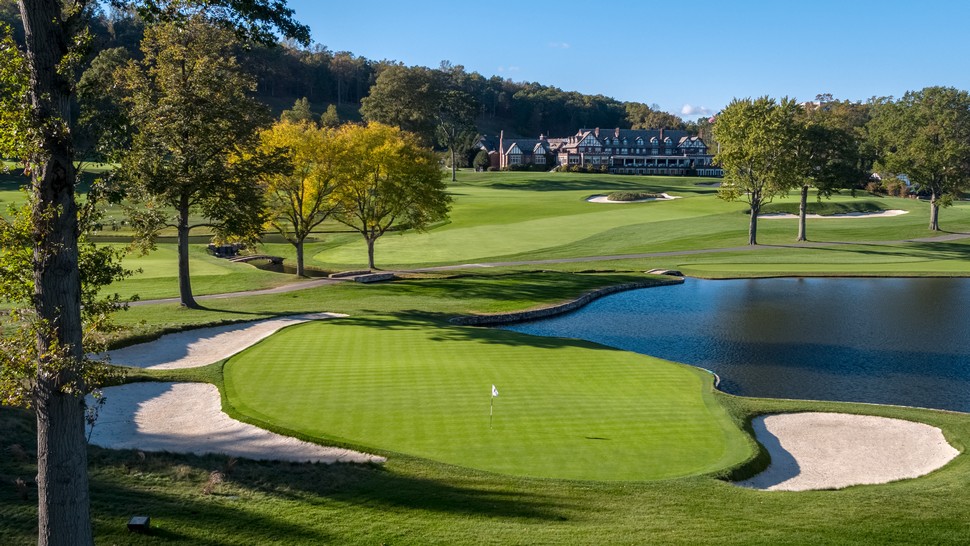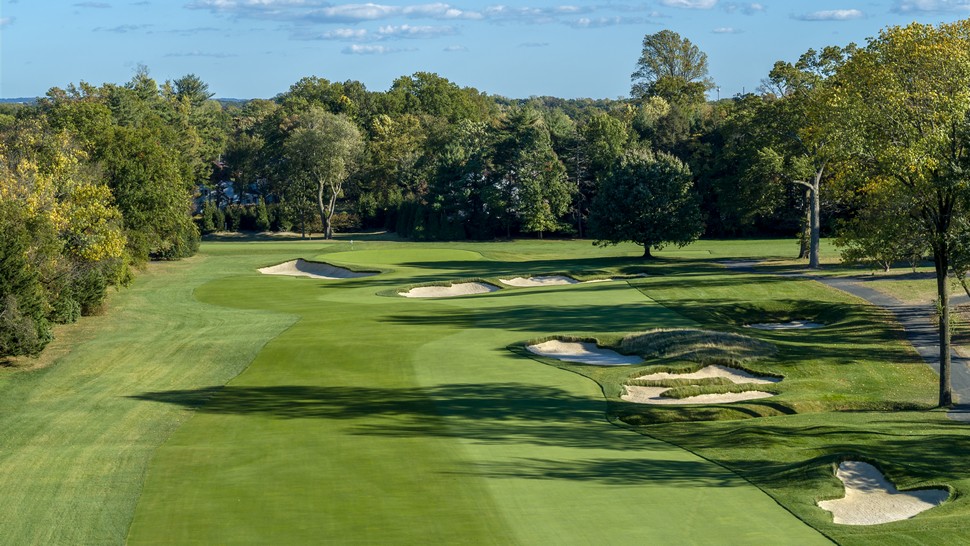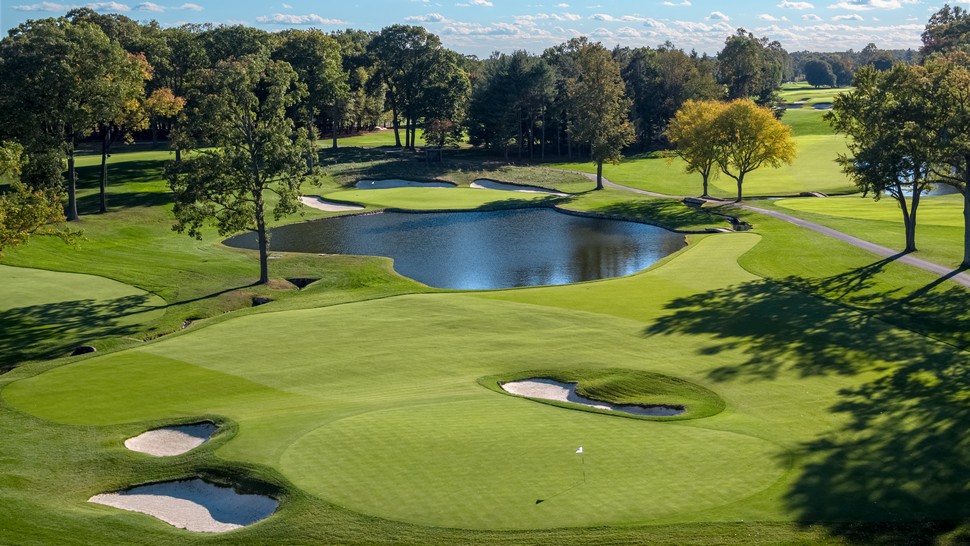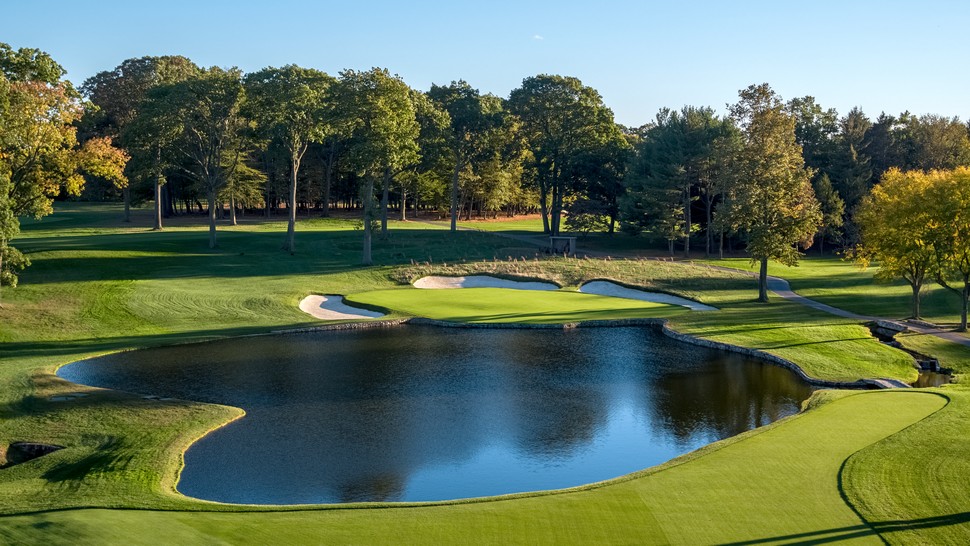SPRINGFIELD, NJ. Baltusrol Golf Club has been the stage for many men’s championships over the years. Hosting seven U.S. Opens and two PGA Championships with a third forthcoming in 2029. The finest female professional players have only competed twice on the grounds — in the 1961 and 1985 U.S. Women’s Opens.
This week’s KPMG Women’s PGA Championship will be contested on the famed Lower Course — the first time the women have played the A.W. Tillinghast design since the 1961 Women’s Open won by the legendary Mickey Wright with a 283 score and six-stroke winning margin for the third of her four wins in the event.
In 2018 architect Gil Hanse was hired by Baltusrol to update all 36 holes. The Lower received attention first and was unveiled in the spring of 2022. Hanse’s primary task was in resurrecting a number of design features Tillinghast originally provided.
The KPMG Women’s PGA Championship is the second of five women major events being played in 2023. The event was formerly called the LPGA Championship but in 2015 a new relationship was created in which the event was conducted jointly by the LPGA and the PGA of America. The event is now the sister event to the men’s PGA Championship.
Among the most recent host sites have been notable clubs such as Congressional, Atlanta Athletic Club, Aronimink and Hazeltine National. Each has hosted respectively the men’s and women’s PGA Championship.
The field is playing for a $9 million purse, trailing only the $10 million U.S. Women’s Open, the very next event on the schedule in two weeks for the first time at Pebble Beach in California.
The women competing this week face a Lower Course with a par-71 6,621-yard layout. For many competitors this week will also mark their first time on the grounds of the storied club.
The Lower Course starts with a series of six challenging holes immediately starting from the opening tee shot. Players will need to be especially cognizant of the early challenges the opening six holes present.
While much attention is spent on the final two par-5 holes on the Lower Course, getting off to a good start will be a critical factor in getting into contention and ultimately competing for the title.
Baltusrol Golf Club has not been seen by the broader global golf audience since hosting the 2016 PGA Championship but the “new” version one sees this week with the KPMG Women’s PGA Championship will reacquaint people with the architectural brilliance Tillinghast originally provided and what Hanse was able to bring successfully back to the forefront.
***
1st Hole / 440 Yards / Par-4
The Lower’s opening hole plays as a par-5 for the members. The key rests with finding the fairway on this stout two-shot hole. Bunkers protect the right side and out-of-bounds awaits to the far left.
The green is open in the front so players can opt to run the ball onto the putting surface if the need arises. The necessity in finding the fairway is imperative in order to reach the green and given the pressures of the opening tee shot the goal in doing so will be tested right from the outset.
The green, like many on the Lower Course, provides a wide range of vexing subtle movements.
2nd Hole / 363 Yards / Par-4
The 2nd hole is listed at 363 yards but will play effectively just a bit longer as the hole climbs from the teeing area.
A trio of bunkers hug the left side and for those who significantly pull a tee shot it’s possible out-of-bounds on that side can be reached.
The optimum play is to find the fairway and have anywhere from a short-to-mid-iron to the large putting surface.
The depth and width of the green will make approach play difficult to gauge successfully. Birdies are possible but so are careless three-putts.
3rd Hole / 439 Yards / Par-4
The 3rd is a demanding downhill hole which turns left in the drive zone. Like many holes on the Lower the key rests in finding the fairway. That requirement goes a long way in determining your success.
The rough cut is extended out from the left side and will thwart those seeking to shave off distance by going too far over on that side.
The right rough and trees can also pinch in for those going too far to that side.
Players are left with a downhill approach to the green. Those unable to find the fairway will need to contend with a creek crossing that runs perpendicular 40 yards short of the green.
The putting surface has a range of internal movements and when the pin is placed to either the far left or right corners the need for precision will be central as bunkers hug close to both sides.
4th Hole / 162 Yards / Par-3
The 4th at Baltusrol Lower was named by writer Dan Jenkins in his 1965 Sports Illustrated article as one of the best 18 holes in the USA and highlighted by a hole-in-one from the man — Robert Trent Jones, Sr. — who proved to a doubtful membership that the hole was “eminently fair” when the Lower was being revamped to host the 1954 U.S. Open championship.
The 4th plays over a pond that awaits the slightest mishap. The teeing area can be extended or shortened as needed and when the pin is placed in either the front left or right areas the requirement for utmost precision is a must.
The green is sloped from back-to-front and being near to the daily pin position is essential as three-putts can happen in the blink of an eye.

Related: Riviera lands 2031 U.S. Open
5th Hole / 377 Yards / Par-4
Like the 2nd, the 5th appears innocent when simply looking at the overall yardage but the requirements are anything but elementary.
Hanse included a series of three diagonally-placed bunkers located in the middle of the fairway. Players can either play short of them or attempt to go to either side. Some may even attempt to drive over them.
The green is perched on a rise and approach shots must be hit with enough distance to avoid a false front that will quickly pull one’s approach off the front edge. The putting surface has plenty of movement from back-to-front and the key is getting close enough to the hole with the approach to avoid having to gauge massive movements the green provides.
6th Hole / 415 Yards / Par-4
Provides one of the most challenging tee shots on the Lower Course. The fairway features a turtle’s back with fall-offs to either side.
A cluster of bunkers is on the left side and must be avoided. The tree line on the right can also make its presence known for players finishing too far to that side.
The approach is infinitely more doable when played from the fairway. The green, like others on the Lower Course, permits bounced shots to access the putting surface but the sheer depth of many of the greens can still provide a challenge to get near enough to the daily pin placement
Photos Courtesy: Evan Schiller.






